HOW MANY STARS ARE THERE IN THE UNIVERSE?
All About Space
|Issue 128
WITH A FLEET OF: MISSIONS SCOURING THE COSMOS, WILL IT EVER BE POSSIBLE TO COME TO AN ESTIMATE?

Looking up into the night sky, you might wonder just how many stars are in the universe. It's challenging enough for an amateur astronomer to count the number of naked-eye stars that are visible, and with bigger telescopes, more stars come into view, making counting them a lengthy process. So how do astronomers figure out how many stars are in the universe?

The first tricky part is trying to define whát 'universe means, says David Kornreich, a professor at Ithaca College in New York State. He was also the founder of the 'Ảsk An Astronomer service at Cornell University. “I don't know, because I don't know, if the universe is infinitely large or, not," he said. The observable universe appears to go back in time by about 13.8 billion years, but beyond what we could see there could be much more. Some astronomers also think that we may live in a 'multiverse', where there would be other „universes like ours contained in some sort of larger entity.
The simplest answer may be to estimate the number of stars in a typical galaxy, and then múltiply that by the estimated number of galaxies in the universe. But even that is difficult, as some galaxies shine better in visible light or in infrared. There are also estimation hurdles that must be overcome. In October 2016, deep-field images from the Hubble Space Telescope suggested that there are about 2 trillion galaxies in the observable universe, or about ten times more galaxies than previously suggested. Speaking with All About Space, the lead author of a new study published in Nature, Christopher Conselice, a professor of astrophysics at the University of Manchester in the UK, says there are about 100 million stars in the average galaxy.
Denne historien er fra Issue 128-utgaven av All About Space.
Abonner på Magzter GOLD for å få tilgang til tusenvis av kuraterte premiumhistorier og over 9000 magasiner og aviser.
Allerede abonnent? Logg på
FLERE HISTORIER FRA All About Space

All About Space UK
MYSTERIES OF THE UNI WHERE ARE ALL THE SPIRAL GALAXIES?
There are far fewer spiral galaxies than elliptical ones in the Supergalactic Plane, and scientists are keen to discover why
7 mins
Issue 161
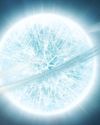
All About Space UK
ZOMBIE STARS
+10 OTHER TERRIFYING SPACE OBJECTS
8 mins
Issue 161

All About Space UK
HOW TO BEAT LIGHT POLLUTION
Thought it was impossible to observe the wonders of the night sky from towns and cities? Think again. Follow our tips and tricks on successfully observing through sky glow
2 mins
Issue 161
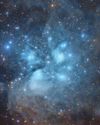
All About Space UK
15 STUNNING STAR CLUSTERS
These beautiful stellar groupings are spattered across the cosmos
8 mins
Issue 161

All About Space UK
Eileen Collins "It was a difficult mission...we were the first to see Mir"
Having served as both the first female pilot and first female commander of NASA's Space Shuttle, Collins boosted the involvement of women in space exploration to a whole new level
9 mins
Issue 161
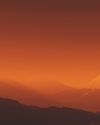
All About Space UK
MARS LEAKS FASTER WHEN IT'S CLOSER TO THE SUN
The Red Planet has lost enough water to space to form a global ocean hundreds of kilometres deep
2 mins
Issue 161
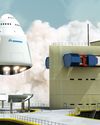
All About Space UK
FUTURE TECH KANKOH-MARU
This ambitious reusable spacecraft will be capable of taking 50 people to and from orbit
2 mins
Issue 161

All About Space UK
THE FINAL FRONTIER
Beyond the reach of the Sun is a fascinating region of the cosmos that were only just beginning to explore
8 mins
Issue 161
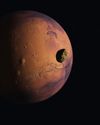
All About Space UK
A long-lost moon could explain Mars' weird shape and extreme terrain
A long-lost moon could explain why Mars is so different from the other rocky planets in the Solar System. Today Mars has two tiny moons.
2 mins
Issue 161
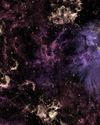
All About Space UK
A sprinkling of cosmic dust may have helped kick-start life on Earth
Cosmic dust may have helped kick-start life on Earth. New findings challenge a widely held assumption that this wasn't a plausible explanation.
3 mins
Issue 161
Translate
Change font size

